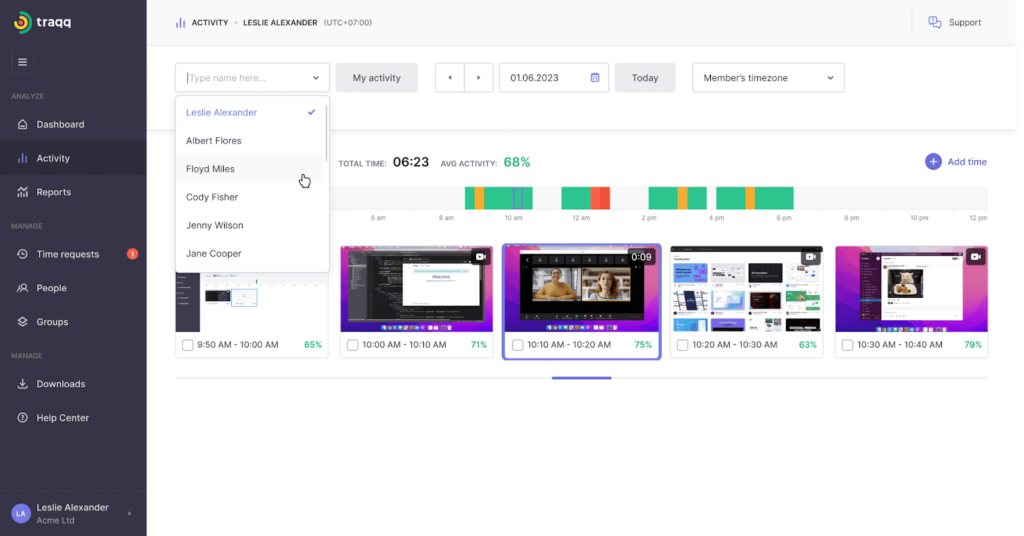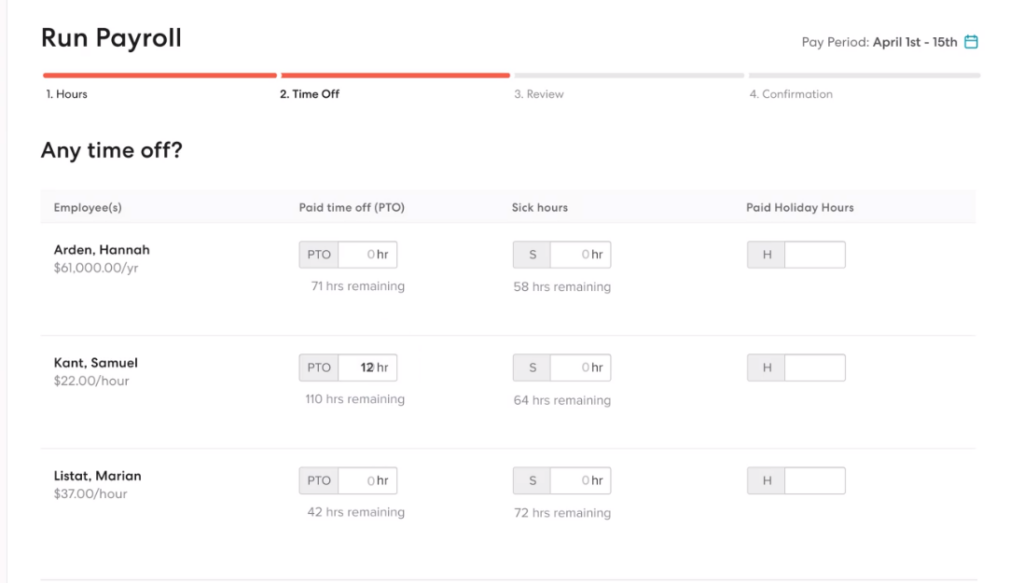Last updated - November 29, 2023
In today’s digital age, eCommerce stands out as a thriving industry. The ease and accessibility it provides have fueled a significant rise in online shopping. However, as more businesses join the eCommerce arena, expanding your own becomes increasingly challenging, yet essential.
Scaling means not only growing your reach and revenue but also making sure your operations remain efficient and profitable. To help you with this, we’ll explore the best tools and strategies that can empower your eCommerce business to thrive in this ever-changing landscape.
Laying the Groundwork
When gearing up to scale your eCommerce business, it’s essential to start with a thorough assessment of your current situation. This means digging into your sales figures and diving into the data. By analyzing your past performance and metrics, you can identify patterns, trends, and areas that require enhancement.
Next up, give your product offerings a good once-over. Take a look at what you’re selling. Are there products that are consistent top-sellers, or are there hidden gems waiting to be promoted? Evaluating your product line helps you decide what to emphasize and what might need a refresh.
Lastly, let’s not forget about your audience. Understanding who your customers are, what they want, and how they behave is crucial. It’s like a roadmap for your marketing efforts. When you have a deep understanding of your target audience, you can tailor your strategies to connect with them more effectively.
Here are some tips on how to determine your target audience:
- Demographic Data: Start by collecting and analyzing demographic information about your current customers and website visitors. It may include age, gender, location, and other aspects. Tools like Google Analytics can provide valuable insights.
- Psychographic Insights: Understand their values, lifestyles, interests, and behavior. Surveys, social media, and customer interviews can help uncover this information.
- Customer Segmentation: Break your audience down into segments based on shared characteristics. For instance, create personas that represent different types of customers. This can help you create more tailored marketing strategies.
- Competitor Analysis: Analyze your competition and get to know their customer base. Identify gaps or niches they might be missing. These gaps could be opportunities to target specific audience segments effectively.
- Surveys and Feedback: Directly ask your customers for feedback through surveys or feedback forms on your website. This can provide you with valuable insights into what they prefer, what challenges they face, and what they expect.
- Social Media Insights: Analyze your social media followers and engage with them. Social media platforms often provide data on the demographics and interests of your audience. Utilize this data to improve your content and marketing campaigns.
Strategies to Scale Your eCommerce Business
Let’s explore some strategies that can help you scale your eCommerce business.
Product Development
Expanding your product offerings not only draws in a wider audience but also maintains the interest of your current customers. When it comes to choosing your product development strategy, you face some essential decisions:
- Diversification vs. Niche Focus: You have a choice to make. Do you diversify your product offerings to cater to a broader audience, or do you focus on a niche market? This decision should align with your brand identity and resonate with your target audience. Diversification can help you reach a wider customer base, while niche focus allows you to become a specialist in a specific area, potentially commanding higher prices and customer loyalty.
- Product Research and Trends: To effectively expand your product line, it’s essential to stay updated on market trends and consumer preferences. Regularly research what’s hot and what’s not in your industry. Understand shifting consumer needs and adapt your product lineup accordingly. Being proactive in identifying trends can give your eCommerce business a competitive edge and keep customers excited about what you have to offer.
Finding Reliable Suppliers
The reliability of your suppliers directly impacts your ability to meet customer demands and maintain a positive brand image. Investigate your potential suppliers thoroughly. Look for reviews, ask for references, and seek feedback from other businesses they’ve worked with.
Ensure that your suppliers have a consistent history of delivering products promptly and in excellent condition. Late deliveries or quality problems can disrupt your operations and damage customer trust.
In addition, don’t be hesitant to engage in discussions about terms and agreements. Here’s what you can consider:
- Bulk Purchases: If your business is growing, consider making bulk purchases. Suppliers may be willing to offer you better pricing when you order in larger quantities. This can help you lower your per-unit costs.
- Long-Term Partnerships: Developing strong, long-lasting relationships with suppliers can lead to more favorable agreements. Suppliers are often open to providing better terms and discounts to businesses they view as reliable, repeat customers.
Quality Control and Testing
Never compromise on product quality. Your customers expect and deserve products that meet or exceed their expectations.
- Enforce strict quality control: Establish quality control processes within your supply chain. This can include regular inspections, quality checks at different production stages, and adherence to industry standards and regulations.
- Actively seek feedback from your customers: Encourage customers to provide feedback through surveys, product reviews, and direct communication channels. Make it easy for them to share their thoughts.
- Analyze feedback: Use customer feedback as a roadmap for making necessary improvements. Whether it’s refining product design, adjusting materials, or enhancing features, continuous improvement should be an integral part of your product development process.
Scaling Marketing and Advertising
Effective marketing strategies can drive traffic, boost sales, and foster brand loyalty. Here’s how you can scale your marketing efforts:
Content Marketing
Content marketing is a powerful tool for establishing your brand’s presence and authority. If you provide value to your audience, you can build trust and engagement. Here are two key aspects:
- Blogging and Content Creation: One of the foundations of content marketing is creating valuable content that connects with your audience. Blogs, articles, videos, and infographics are all means to achieve this. Consistent and informative content attracts new customers and engages the current ones.
- SEO and Keyword Strategy: To ensure your content reaches a wider audience, it’s vital to optimize it for search engines. By using relevant keywords, you improve your website’s visibility and attract organic traffic.
Paid Advertising
Paid advertising offers a direct way to reach potential customers. Here are some avenues to explore:
- Google Ads: Google Ads helps you reach people actively looking for products like yours, boosting your online visibility. It’s a valuable tool for improving your online presence and directing traffic to your website.
- Social Media Advertising: Utilizing social media platforms for advertising can help you reach your target audience. With targeted ads and sponsored content, you can engage with potential customers where they spend their time online.
Influencer Marketing
Influencer marketing involves partnering with industry or niche experts with a large following. Here’s how you can make the most of it:
- Collaborating with Influencers: Partnering with influencers allows you to tap into their engaged audience authentically. Select influencers whose followers match your target audience to make sure your marketing message resonates.
- Measuring ROI: While influencer marketing can be effective, it’s crucial to keep a close eye on the return on investment (ROI). Ensure that your collaboration with influencers is giving you the results you want, such as greater brand visibility, engagement, and increased sales.
Email Marketing Campaigns
Email marketing is still a strong way to connect with your audience and boost sales. Here’s how to maximize its impact:
- Segmentation and Personalization: Divide your email list based on factors like what customers have bought, their demographics, or how they browse your site. Customize your email campaigns to offer relevant content and deals to different customer groups.
- A/B Testing: Continuously test different elements of your email campaigns, such as subject lines, content, and call-to-action buttons. A/B testing helps you refine your email strategy to optimize performance and engagement.
Enhancing Customer Experience
In the competitive world of eCommerce, improving the customer experience sets you apart from the crowd. Happy customers tend to come back and promote your business to a wider audience. Here are some tactics to boost your customer experience:
- User-friendly website design: Make sure that your website is easy to navigate and has an appealing design. It should have a clutter-free layout, intuitive menus, and clear product information.
- Mobile optimization: More and more shoppers use mobile devices. A mobile-responsive design guarantees a seamless browsing and shopping experience for your on-the-go customers.
- Live chat and chatbots: Incorporate live chat and chatbots on your website to offer immediate support to customers.
- Rewards and exclusive offers: Create loyalty programs that offer discounts, exclusive offers, or even rewards to repeat customers. These incentives not only show appreciation but also encourage customers to come back.
Scaling Operations
As your eCommerce business grows, it’s essential to ensure that your operations can keep up with increasing demands. Scaling your operations involves optimizing various aspects of your business such as logistics and fulfillment, IT infrastructure, and hiring process. Let’s have a look at each aspect.
Logistics and Fulfillment
Efficient shipping and logistics play a crucial role in delivering products to your customers promptly and cost-effectively. Let’s delve into two vital aspects:
- Efficient Shipping Strategies: Optimizing your shipping processes is essential to reduce delivery times and costs. Consider offering choices like free shipping for certain order amounts or expedited shipping for those who need their purchases sooner.
- Third-Party Logistics (3PL): Partnering with third-party logistics providers (3PLs) can be a game-changer. They can handle warehousing, order fulfillment, and shipping, allowing you to concentrate on your main business tasks.
IT Infrastructure
Your IT system also should be able to expand as your eCommerce business grows.
- Cloud Computing: The cloud is cost-effective and flexible. You can add more computing power when needed without buying expensive hardware upfront.
- Scalable Hosting Solutions: Your website’s hosting needs to be scalable as well. Choose web hosting services that can handle higher traffic and growth without sacrificing website performance.
Hiring and Training
Scaling your operations often requires an expansion of your team and the development of existing staff.
- Identifying Key Roles: Identify the key roles essential for scaling your operations. This may include positions related to logistics, customer support, marketing, or IT. Ensure that you have qualified personnel in place to fill these roles as your business grows.
- Employee Development: Make sure to provide employee training to help them improve their skills and adapt to changing business needs. Employees who are well-trained and continuously updated on industry trends and technologies are valuable assets in scaling your operations.
Leveraging Technology and Tools
Software is an essential partner in your journey to business growth. It makes everything more efficient, from managing tasks to gathering and analyzing important data. Let’s explore various tools in different categories that can help you scale your eCommerce business.
HR Related Tools
HR tools play a vital role in eCommerce businesses by making it easier to hire and manage employees. Beyond that, they help in nurturing a skilled team, which in turn boosts productivity and keeps customers satisfied.
Traqq


Traqq is a comprehensive time-tracking software designed to help businesses, including eCommerce ones, efficiently manage their workforce’s time and productivity. Its main features include automated time tracking, activity monitoring, and detailed timesheets.
For eCommerce businesses, time tracking with Traqq can be a game-changer. It shows how much time is spent on different tasks, helping in better resource allocation. It also ensures accurate billing for freelance or remote workers.
Key features:
- Automated time tracking
- Real-time activity monitoring
- Comprehensive timesheets
- Screenshots capture
Asana


Asana simplifies task management by allowing teams to create, assign, and track tasks effortlessly. Its project timelines help in setting clear project goals and deadlines, ensuring everyone stays on the same page.
Asana also fosters team communication by providing a centralized platform for discussions, file sharing, and updates. Its customizable workflows enable businesses to adapt the tool to their specific processes, boosting efficiency.
Key features:
- Customizable workflows
- Task management
- Project timelines
- Communication within the team
Gusto


Gusto is a valuable tool for scaling your eCommerce business. It simplifies HR management, saving time and guaranteeing accurate and timely employee payments. Gusto takes the headache out of payroll, automating calculations, tax filings, and direct deposits. It also handles benefits administration, offering tools for health insurance, retirement plans, and even time-off tracking.
Key features:
- Payroll processing
- Benefits administration
- Employee onboarding
- Compliance management
Payment Processing Tools
Payment processing tools facilitate secure and convenient transactions, which are the lifeblood of online retail. These tools ensure that customers can make purchases smoothly, boosting their trust and satisfaction. Additionally, payment processors expand the business’s reach by handling various payment methods.
Stripe


Stripe allows businesses to integrate it into their websites or apps effortlessly. It ensures transactions are secure through encryption and compliance with industry standards.
Stripe supports multiple currencies and payment methods. Additionally, it offers detailed analytics and reporting, providing companies with important information about their financial performance.
Key features:
- Seamless payment integration
- Strong security measures
- Global reach
- Detailed analytics
PayPal


PayPal is a well-known and trusted payment platform used worldwide. It provides a secure way for shoppers to make payments, reducing cart abandonment rates.
PayPal accepts multiple payment methods and currencies, making it accessible to a broad international customer base. It simplifies financial management by offering detailed transaction history and financial reporting, streamlining bookkeeping for business owners.
Key features:
- Secure transactions
- Multiple payment options
- User-friendly integration
- Detailed financial reporting
Customer Success Tools
Customer success tools help optimize customer interactions, leading to increased satisfaction and loyalty. These tools enable personalized support, timely issue resolution, and insights into customer behavior.
Salesforce


Salesforce is a comprehensive customer relationship management (CRM) system that empowers eCommerce businesses to thrive by enhancing customer relationships. It excels in data analytics, providing insights into customer behavior and preferences. Additionally, Salesforce’s scalability means it can grow with your business, accommodating increased customer volumes and expanding product lines.
Key features:
- Customer relationship management
- Data analytics
- Sales pipeline management
- Customization options
Zendesk


Zendesk simplifies customer service by consolidating all customer inquiries and support requests into a unified ticketing system. It lets businesses connect with customers through different channels like email, chat, social media, and more. Zendesk also empowers customers to find solutions themselves through self-service options like knowledge bases and FAQs.
Key features:
- Ticketing system
- Multi-channel support
- Self-service options
- Analytics
Gorgias


Gorgias is a powerful eCommerce helpdesk platform that will help you to manage customer inquiries. It offers automated responses using AI to handle repetitive queries, saving time for support teams. Gorgias integrates seamlessly with various eCommerce platforms, enhancing efficiency and providing a 360-degree view of customer information.
Key features:
- Unified dashboard
- Automated responses
- eCommerce platform integrations
- Performance analytics
Marketing Tools
Marketing tools enable targeted advertising, helping reach the right audience with the right products or services. Additionally, they provide data-driven insights that may help you refine your marketing strategies and optimize campaigns.
Yotpo


Yotpo is a great platform for boosting your online visibility and engaging with customers. It offers a feature of collecting and showcasing reviews and ratings, helping increase sales and conversion rates.
Yotpo also focuses on visual marketing, allowing businesses to create shoppable galleries of user-generated photos. Additionally, it facilitates loyalty programs that reward customers for their engagement. This approach fosters brand loyalty and repeat purchases.
Key features:
- User-generated content
- Loyalty programs
- Integration with eCommerce platforms
- Customization options
Omnisend


Omnisend is a flexible marketing automation platform designed for eCommerce businesses. With this tool, you can create and send targeted email campaigns. It goes beyond emails by enabling SMS campaigns for reaching customers via text messages.
Businesses also can set up automated sequences for everything from welcome emails to cart abandonment reminders. Additionally, Omnisend offers advanced customer segmentation to tailor marketing messages and promotions based on customer behavior.
Key features:
- Email marketing
- SMS campaigns
- Automation workflows
- Customer segmentation
Analytics Tools
Analytics tools help to scale your eCommerce businesses by providing various insights. They allow you to refine marketing strategies, improve website performance, and elevate the shopping experience.
CrazyEgg


CrazyEgg is a robust website optimization tool. It provides heatmaps that visually display where users click, move their mouse, or scroll on a webpage. This information helps businesses find out which parts of their website are popular and where visitors might have problems.
Moreover, CrazyEgg facilitates A/B testing. It allows you to experiment with different web page variations and analyze which one performs better. User session recordings provide in-depth analysis of individual user journeys, offering valuable feedback for optimizing user experience.
Key features:
Heatmaps
- Scroll maps
- A/B testing
- User session recordings
Semrush


Semrush is a comprehensive digital marketing toolkit. It simplifies keyword research, enabling businesses to discover valuable search terms for their industry and target audience. It offers competitor analysis tools, enabling businesses to understand their competitors’ strategies and find potential opportunities. Semrush’s site auditing feature helps improve website health by uncovering technical issues.
Key features:
- Keyword research
- Competitor analysis
- Site auditing
- Content optimization
Google Analytics


Google Analytics helps businesses understand their website’s traffic sources, whether it’s through search engines, social media, or referrals. It provides demographic information about website visitors, such as their age or location.
Moreover, Google Analytics allows businesses to set and track specific goals. For example, you can monitor how often your customers sign up for a newsletter or add products to your cart. It offers comprehensive eCommerce tracking, providing detailed data on sales, revenue, and product performance.
Key features:
- Traffic analysis
- User demographics
- Goal tracking
- eCommerce tracking
Conclusion
Scaling your eCommerce business is a journey that requires clear goals, financial planning, and operational efficiency. It’s vital to understand your target audience, continuously adapt to market trends, and embrace the right tools and strategies for growth. Flexibility and data-driven decision-making are your allies. Remember, there’s no universal solution, so be prepared to adjust your course as needed. With determination and the right approach, your eCommerce business can succeed in the ever-evolving online market.











